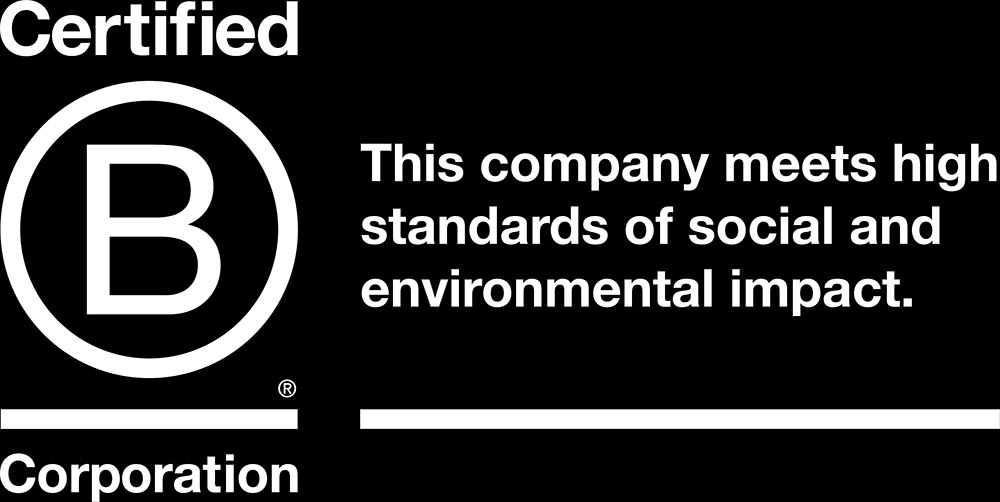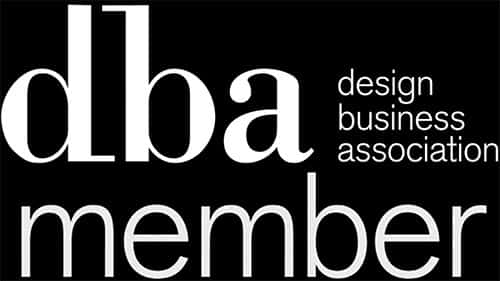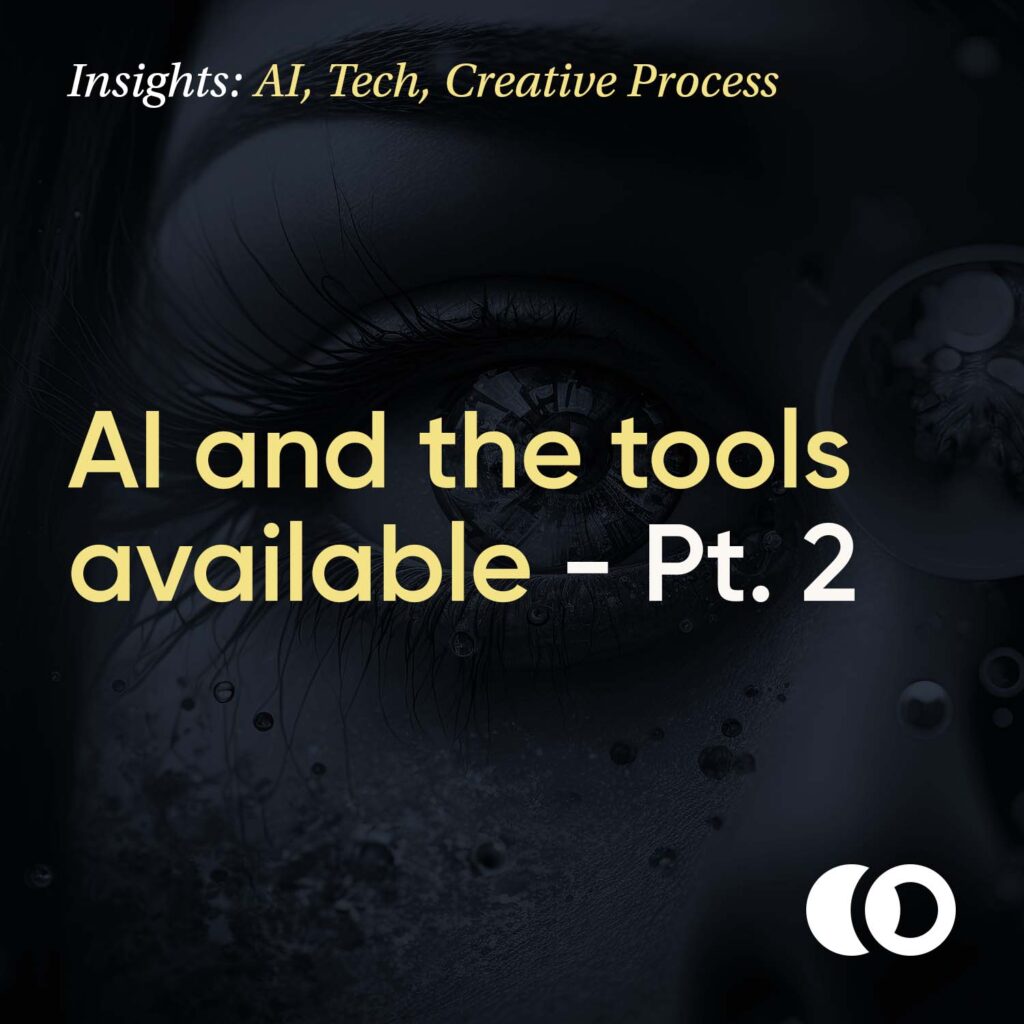
The Archive
AI and the tools available – 2/3
Author: Ed Garrett | 10 minute read
“Your scientists were so preoccupied with whether or not they could that they didn't stop to think if they should.” - Dr Ian Malcolm, Jurassic Park

In this second part of our AI series ‘Could we, should we’, we share our insights on the tools we’re experimenting with, how they can support the creative process, and where you need to be wary.
Earlier in the year when AI started to enter conversations in our team meetings, we decided that as well as needing an AI strategy for the agency, we also wanted to write an AI policy to ensure there is clarity and transparency with the way we use it. The anchor to all this, a prime directive if you like, is that we are committed to protecting people and the planet in whatever way we can.
Our prime directives:
- We will use AI and new technology to enable and empower our creative team, and not replace them at any stage of the creative process.
- We will use AI with eyes wide open to the societal and environmental impacts of this technology and work to minimise any damaging effects of its use.
- We will devise a way to monitor our use of the technology, minimise our energy consumption and research the use of more ethical AI platforms as they become available.
With this in mind, our team has been exploring tools to support our work and help us to deliver exceptional results for our clients. It’s worth noting that AI, as far as we currently know, is not capable of original thought. It references imagery and writing that already exists in the world and there are all sorts of copyright and plagiarism issues here that need to be considered. On that basis our use of AI at this time sits predominately at the research, ideation and concept development stage of our projects.
New tools and apps are popping up on a daily basis and it can all get a bit overwhelming. Below are a few that we’ve found useful and continue to explore in our work.

MidJourney: Research, concept development, brand mockups
MidJourney is an AI program that generates visual art and images based on text descriptions. It’s currently accessible via Discord.
While some of our team continue to prefer using paper and pencils, for those of us who don’t draw it can be a very efficient way to test ideas and research creative concepts. Given that we are predominantly designers as opposed to artists, one of the best applications we found is using it to create mockups, although generally speaking it’s better at creating tech and product images as opposed to those with humans in.
Whilst Midjourney helps in some areas to test concepts, we try to avoid relying on it too heavily as it can get in the way of traditional creative thinking and block some of our best ideas.
PROS:
- The images are out of this world.
- It enhances our creativity as we are able to generate multiple design options quickly, providing us with a range of images to reference.
- It inspires fresh concepts and aids in the ideation process, leading eventually to innovative and engaging content.
CONS:
- It’s only accessible via Discord and effective prompts are complex meaning things can often go wrong.
- There is a clear bias when it comes to creating images of people and results can feel ‘stocky’ at best, or often uncanny unless you’re using advanced prompts and stylistic references.
- For the reasons above, the tool is not very accessible if you are starting out and are unfamiliar with the software.
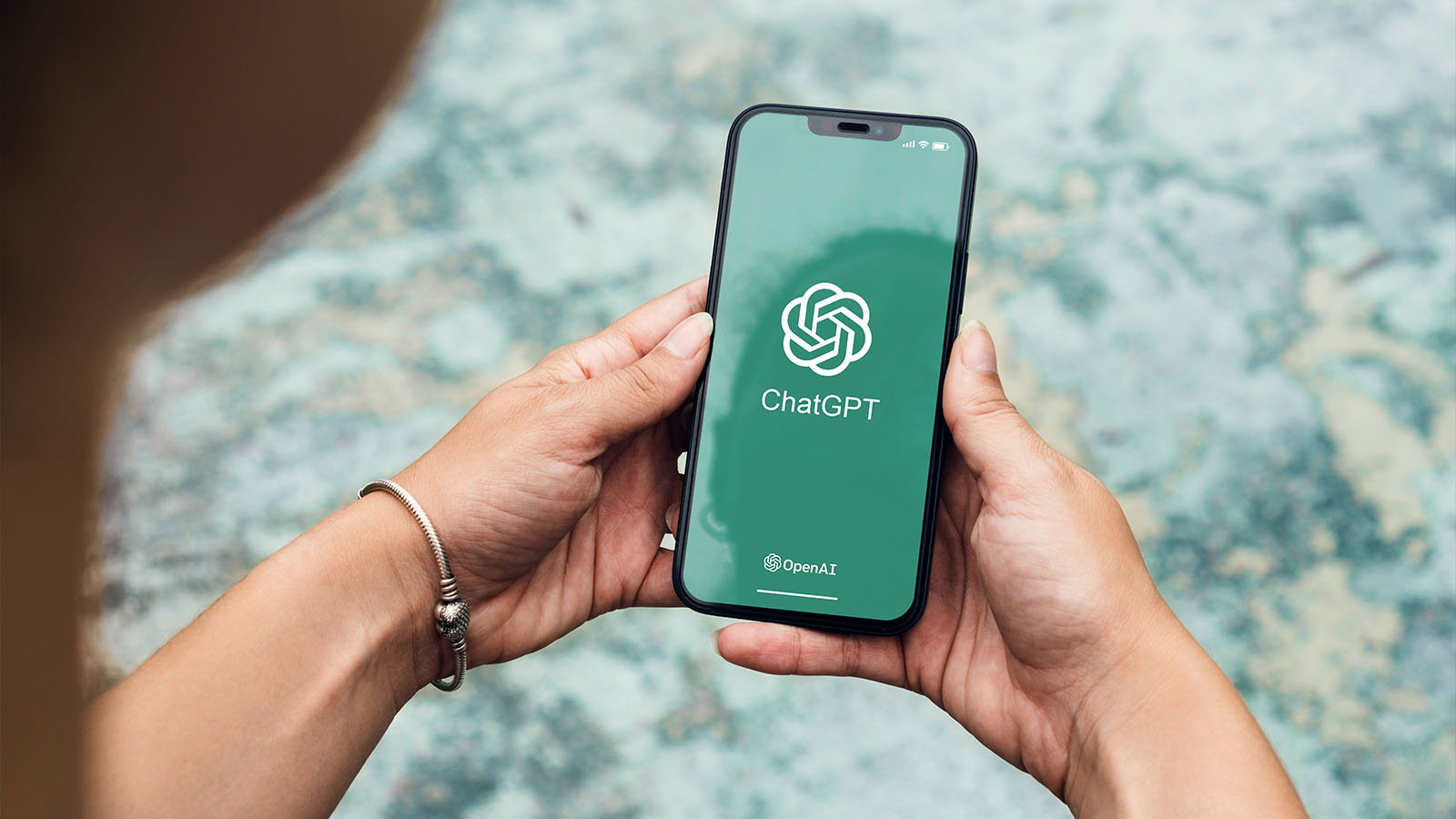
Chat GPT - Research, content editing, basic coding and the ‘blank page’ syndrome
ChatGPT is an advanced language model developed by OpenAI, designed to generate human-like responses and content using text prompts. GPT-4 is a huge advancement as it has enabled the tool to scan the web and does not just rely on content that may be outdated. This has meant that it is a good tool for research on almost any subject, but you must always check and validate your research as there’s no guarantee the source is legitimate.
We’ve also found it useful for editing human generated content, reducing the word count of a blog for example, although it’s vital to proof read and edit whatever is generated. We’ve used it to help us generate basic code for websites and animation (After Effects expressions), something we would otherwise have to trawl Google or GitHub for, and it can be a great tool for overcoming the blank page syndrome and providing ideas or alternatives on a certain topic.
One thing worth mentioning, is that Google hates Chat GPT, and is threatened by it. On this basis it should not be used to write blog content or website copy from scratch, as it can have a seriously detrimental effect on page authority and SEO.
PROS:
- Easy to access and GPT-3 is free to use.
- It can help generate lots of ideas and content very quickly, which can help overcome ‘blank page syndrome.
- It can enhance the creative process by offering new ideas, different perspectives, and alternative angles.
CONS:
- It encourages lazy behaviour and shortcuts, especially if you rely upon it too heavily
- If you’re asking it about facts or data, it may well make up information and GPT-3 doesn’t provide source material.
- It lacks a human touch and copywriting can easily sound robotic, generic and automated.
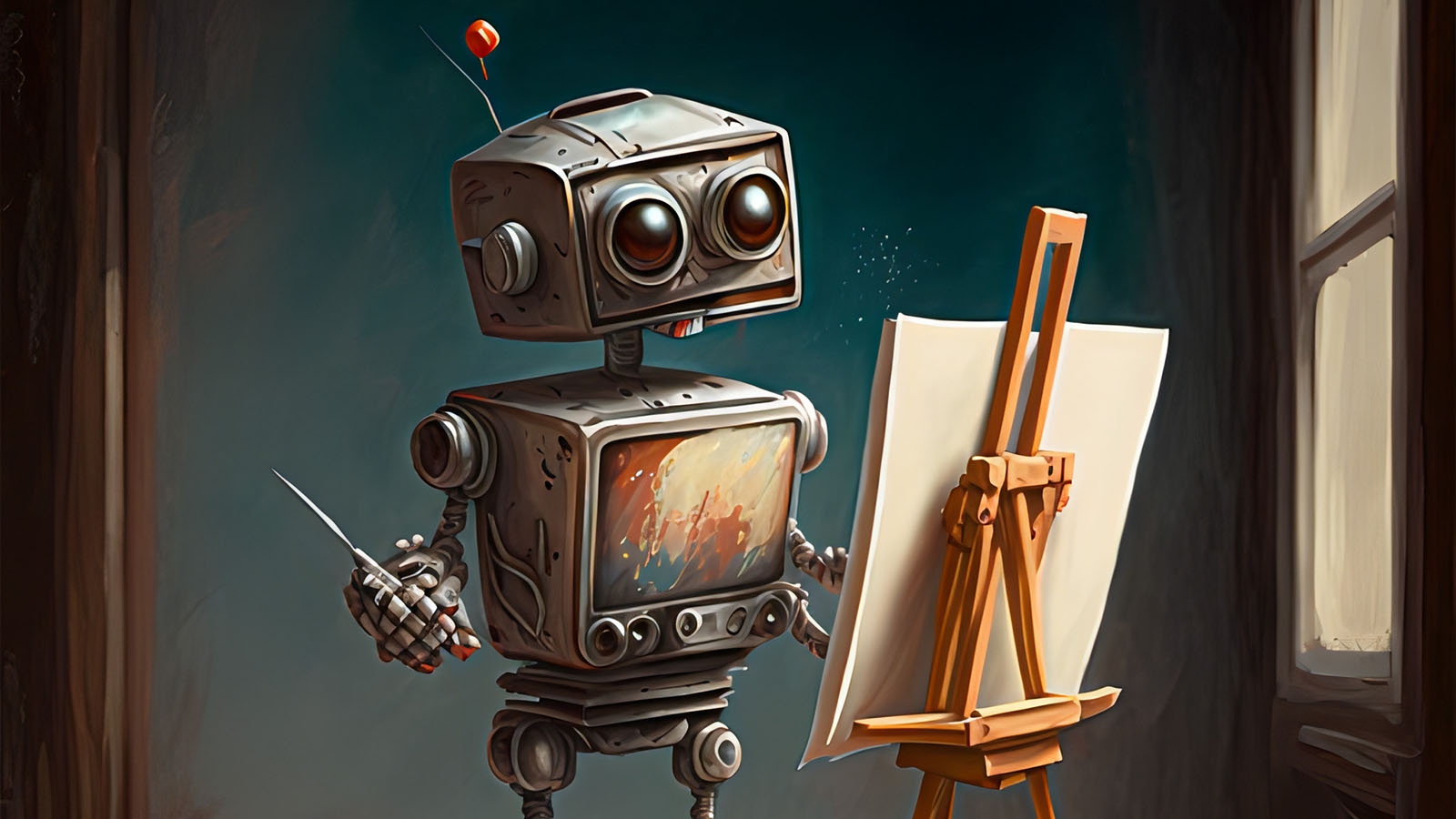
DALL-E: Research, concept development and logo ideation
DALL-E is an AI program developed by OpenAI that creates images and art from textual descriptions. It’s now accessible directly through GPT-4 and from our experience is better at generating flat images and shapes, compared to Mid Journey which excels at creating more conceptual images.
PROS:
- Easy to use and access in GPT-4.
- It can generate images in various styles, such as photorealistic images, paintings, and cartoons.
- Prompting is conversational, and will respond to both simple and complex descriptions.
CONS:
- The app is great for making surreal art and flat logos or icons, but has a hard time creating lifelike images.
- It does take a bit of time and training to understand which prompts the app responds well to.
- There are a bunch of copyright issues which we go into in more detail in Part 3.

Adobe Photoshop - Image treatment and editing
Adobe Photoshop has long been the go to software in the design world, and while it may not be driven by artificial intelligence in the same way as some newer platforms, it’s started to integrate Generative AI as standard in recent versions.
Generative Fill is one of the features our Creative Director Issy has found to be very useful with her work. With it you can add, remove or expand content in images right in Adobe Photoshop with simple text prompts. Unlike the other tools mentioned there is a greater need for skilled human input, therefore it may be more tricky to navigate if you don’t have a background in graphic design.
PROS:
- Integrated into the software which many of us already use, saving time during project development.
- It still requires a designer’s input and a level of control over the design, making it more of a support for artists, than a replacement.
- The tool boosts creativity by letting users try out new artistic ideas in a quick and easy way.
CONS:
- At present (Photoshop 25.2.0), it will often produce unexpected or unwanted results.
- It requires a reasonable level of skill to produce effective results, so it’s less accessible for the novice.
- It offers shortcuts that could result in laziness and an over reliance of the software.
In summary
The software we have explored above represents only a scratch of the AI tool available, which presents a huge opportunity but also conceals a whole host of problems. Therefore, part of using these tools responsibly is also making ourselves aware of our wider impacts of AI for people and the planet. Check out Part 3 in the series where we look into some of the ethical and environmental considerations that it’s important not to lose sight of.
To find out more about the impact AI is having on the Creative Industry and the Bigger Picture, check out the other blogs in this series above.
At The Discourse, we enable businesses and charities to present the best version of themselves, whilst helping them to shift the narrative in society and industry through brand, the web and content. Done right, design builds trust, communicates purpose and positions your organisation successfully at every touch point.
If you’re ready to take your business or charity to the next level, we’d love to have a chat to see if we can help, you can contact us here.


